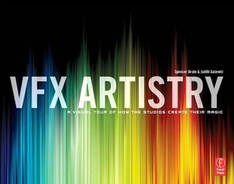14 NTROPIC
STUDIO PHILOSOPHY
Ntropic is a boutique VFX company with offices in San Francisco and Los Angeles. Since opening its doors in 1996, the studio has thrived on creating 2D and 3D visual effects for cinematic highconcept work from feature films such as the Underworld trilogy and The Matrix Revolutions to commercials for Chevy, Coca-Cola, Nissan, Mercedes, SF Giants, and Kohl’s to music videos for My Chemical Romance, Justin Timberlake, and Green Day. A staunch believer in creative collaboration and integrating all aspects into the whole, Ntropic partners with filmmakers to envision and design shots, and incorporate music and sound design.
CHEVROLET–GENERAL MOTORS:“DISAPPEAR”
Creative and Production Process When we were first approached with the project, we were asked to create a time-lapse view of a single gas station over the past 80–100 years. This quickly evolved from not only being about the gas station but the life and times that existed in each period. We worked very closely with the director in Maya using 3D to determine the exact layout of each gas station prior to shooting. After exploring several alternatives we specifically chose to create this piece through a single lock-off as if someone truly planted a camera back in 1920. This created some interesting challenges for design and layout on how to best showcase each gas station with its ever-expanding size while still being able to feature the Aveo, Tahoe, and Volt without ever cutting or moving the camera. There was also the continuing discussion of how much is too much. We wanted to balance the spot so the viewer felt a continuing progression of time with all of the activity that would take place, but still be able to concentrate on our hero vignettes that truly iconize each time period. Also, there is the varying concept of time throughout the different elements. The mountains in the background are moving at one rate, the gas stations are at another, and the vignettes are at another. Each one is designed to tell the story of progress while maintaining all the key moments in each section.
Technically we had several major challenges to overcome, mostly with the actual shooting of the elements. While we had our camera position already determined from our 3D pre-visualization, we still had to shoot a massive amount of elements in multiple locations. Our background was shot in Wyoming over a 24-hour period with exposures taken roughly every 5 minutes, except at sunrise and sunset where we exposed the film every 30 seconds to capture more detail in the changing landscape over these specific periods. The foreground elements were shot at a parking lot in Los Angeles on three 40’ × 120’ exterior greenscreens held up by seven cranes, and the Volt had to be shot at Chevy’s facility in Detroit. Shooting the foreground elements posed a particular challenge because the lighting conditions needed to match as time evolved for each element. The director wanted to use real sunlight to illuminate the foreground elements. To meet this challenge, in our 3D pre-visualization we determined that we would have a sun cycle of roughly 2 days so each time period had to be shot linearly in its appropriate section of time. In addition to


lighting challenges, we shot elements at different frame rates. Some of the background elements were shot between 1.5 fps and 6 fps, while hero foreground vignettes were shot at 24 fps, with the knowledge that we would throw away a lot of frames. The reason for shooting 24 fps was that we knew there would be only a few frames devoted to each element, so we could pick and choose the exact moments in time that will tell the story. During the entire production a team of CG artists created each gas station from scratch in approximately five levels of construction and disarray.
These levels were then animated over a sequence of time as our lighting shifted to match the timelapsesun. After all of the plates were shot, we brought the elements into Flame, where each piece of action was roto’d and composited together with the CG gas stations. As the final piece started to come together we added many small details through 2D and 3D to round out the visual complexity of the spot.
Tools Autodesk Maya, Shake, AfterFX, Flame, Inferno
Credits
Creative Directors: Nathan Robinson, Andrew Sinagra
Lead I nferno Artist: Nathan Walker
CG Supervisor: Peter Hamilton
Inferno Artists: Dominik Bauch, Maya Korenwasser-Bello, Matt Tremaglio Jesse Boots
CG Artists: Deb Santosa, James McCarthy, Dustin Zachary, Javier Bello, Thomas Briggs, Robert Hubbard
Compositors: Marie Denoga, Ed Anderson
